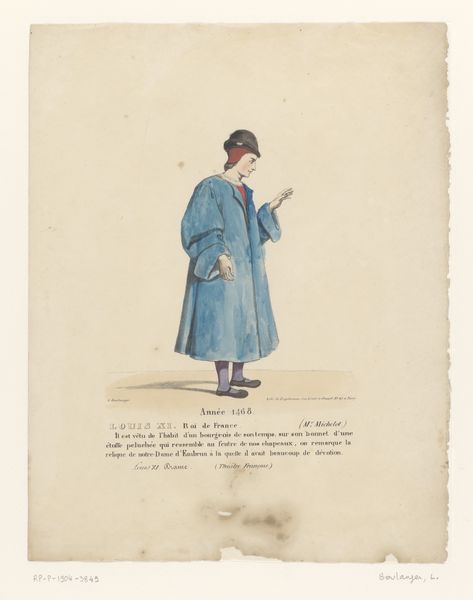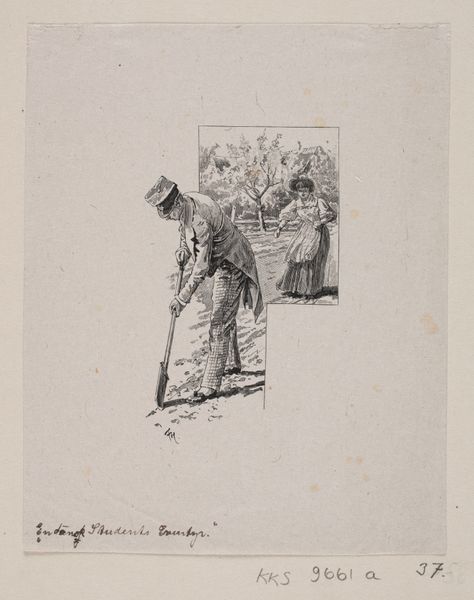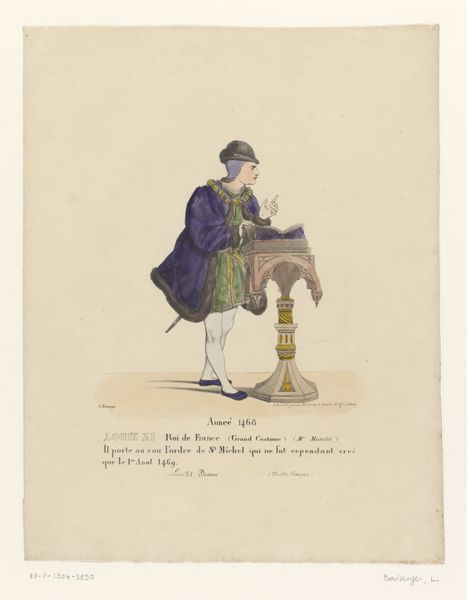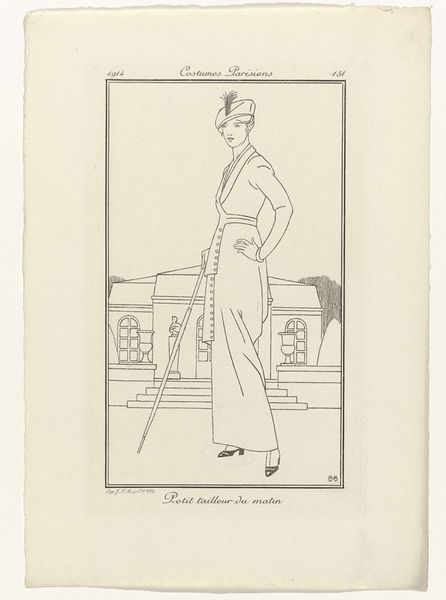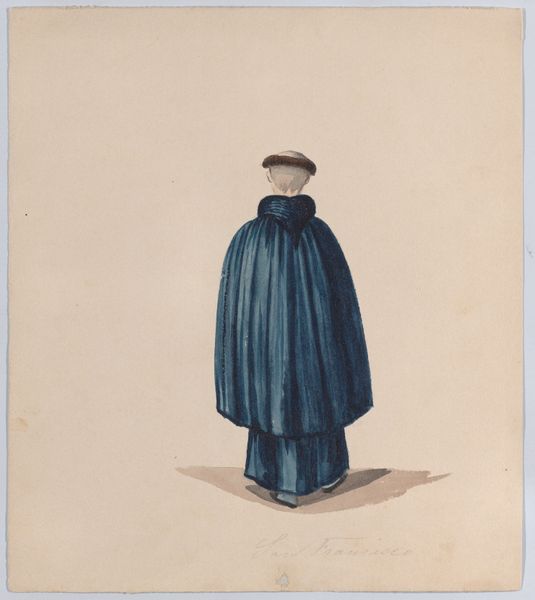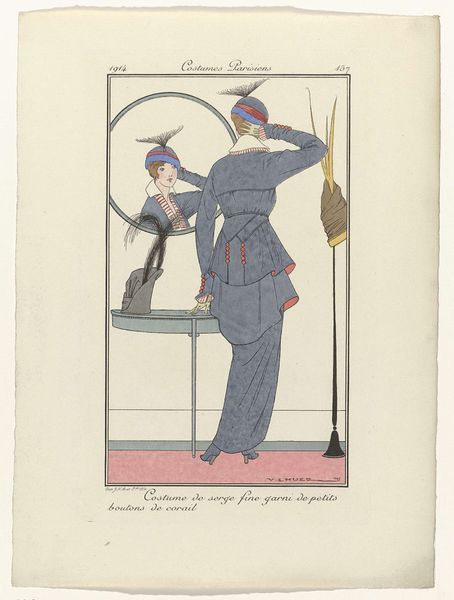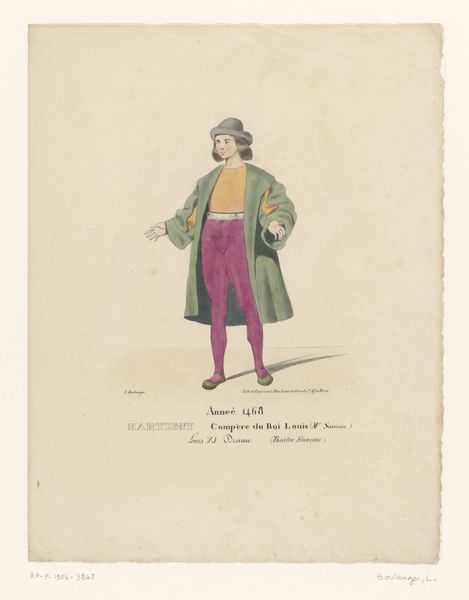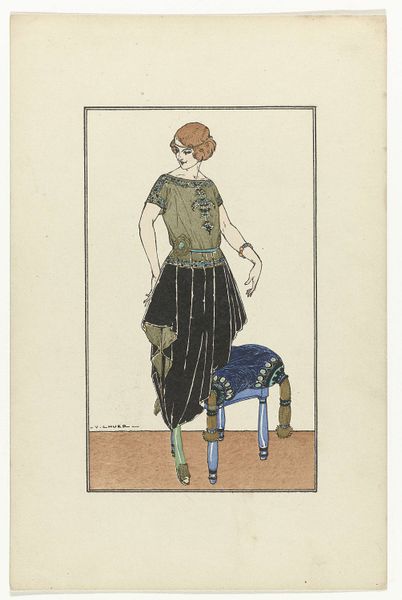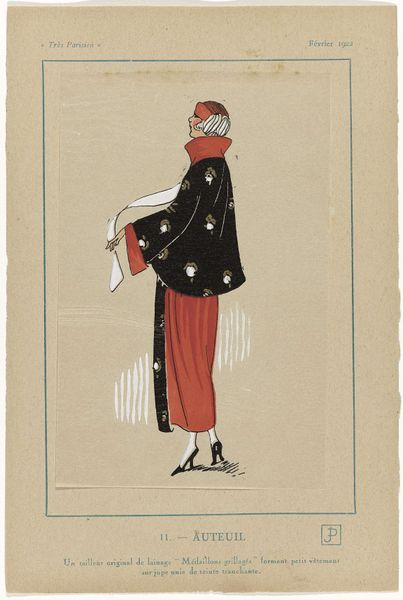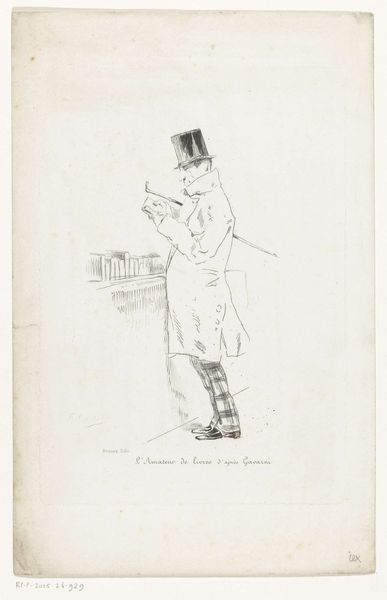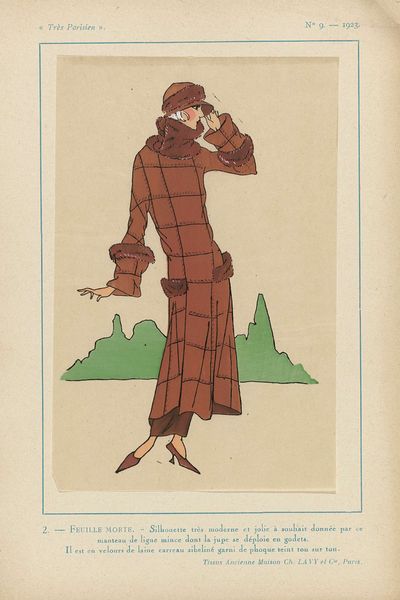
Gazette du Bon Ton, 1914 - No. 1, Pl. VI: Le Jardin de Peyrou / Costume tailleur de Chéruit 1914
Dimensions: height 247 mm, width 191 mm
Copyright: Rijks Museum: Open Domain
Curator: Look at this print from 1914, "Le Jardin de Peyrou / Costume tailleur de Chéruit," created by Bernard Boutet de Monvel. The woman, in her exquisitely tailored suit, strikes quite the elegant pose. Editor: My immediate reaction is a sense of quiet privilege. She is so self-contained, the subtle colors and crisp lines convey a certain refined lifestyle. It's a very precise image. Curator: Absolutely. Consider how geometric shapes are deployed – the jacket's diamond pattern mirroring architectural lines behind. Monvel emphasizes an ideal of stylish order. The clean geometries perhaps reflect anxieties about the impending World War and a need to bring structure to chaotic times. Editor: It’s interesting you see that, because for me, the print invokes how fashion magazines, and representations like these, played a crucial role in defining and solidifying emerging class structures. The female silhouette was becoming a battlefield of socio-economic display. What message do you find carried in the hat with the singular feather? Curator: Feathers always carry an important symbolic meaning. On one level it references indigenous tribal leadership. On another, it denotes an access to flight and escape. Its singularity hints that her position and outfit marks her as something special and set apart from the crowd. And more practically, fashion became a canvas where women pushed and pulled against established codes of conduct. This fashion would probably be inaccessible to all but a privileged few. Editor: The context of the "Gazette du Bon Ton," really amplifies your points, since it aimed at an exclusive clientele. It’s fascinating to consider that what feels to us as 'classic' fashion, in 1914, actively participated in marking boundaries between the aspirational classes, and the less fortunate. Her very stylish existence stands in sharp contrast to that growing turmoil during this pre-war period. Curator: A point well taken. Art reflects and refracts lived experience. And images can cut in many directions, even in something as ostensibly beautiful as a fashion print. I really valued your perspectives, especially on the artwork's social dynamics and class-related themes. Editor: And for me, the exploration of recurring cultural symbols was insightful. It gave another angle to a print that I was quick to dismiss as purely about fashion, when in truth it tells so many cultural truths about women, class, and beauty!
Comments
No comments
Be the first to comment and join the conversation on the ultimate creative platform.

